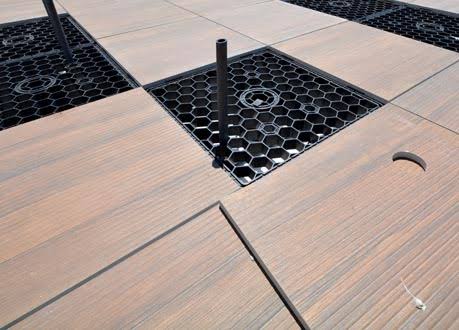Upgrading your computer’s memory can significantly boost performance, but it’s crucial to understand compatibility issues to avoid costly mistakes. DDR5 RAM represents the latest leap in memory technology, offering enhanced speed and efficiency over DDR4. However, installing DDR5 RAM into a DDR4 motherboard poses several challenges. Let’s delve into What Happens If You Put DDR5 into a DDR4 Motherboard? if you try this and why compatibility is essential.
Some essential compatibility of the issue of What Happens If You Put DDR5 into a DDR4 Motherboard?
1. Physical Incompatibility
The first and most apparent issue is physical incompatibility. DDR4 and DDR5 memory modules have different pin layouts and notch placements to ensure proper alignment and prevent incorrect installation. DDR5 RAM modules have an offset notch compared to DDR4 modules, making them physically incompatible with DDR4 slots. This design feature prevents users from inserting DDR5 RAM into DDR4 slots, safeguarding both the motherboard and RAM from potential damage.
2. Electrical and Voltage Differences
Beyond physical incompatibility, DDR4 and DDR5 RAM operate at different voltages. DDR4 typically operates at 1.2V, while DDR5 operates at a lower voltage of 1.1V. This difference in voltage is crucial for ensuring optimal performance and power efficiency. DDR4 motherboards are engineered to handle the specific voltage requirements of DDR4 RAM. As such, they are not equipped to manage the lower voltage requirements of DDR5 RAM. Attempting to use DDR5 RAM in a DDR4 motherboard could result in improper functioning, instability, or even hardware damage due to mismatched electrical specifications.
3. BIOS and Firmware Limitations
Motherboards are designed with BIOS (Basic Input/Output System) and firmware that are tailored to the type of RAM they support. DDR5 introduces new features such as improved data transfer rates and advanced power management. DDR4 motherboards’ BIOS lacks the necessary updates and configurations to recognize and manage DDR5 memory. This BIOS limitation means that even if the physical and electrical issues were resolved, the motherboard would not be able to properly communicate with or configure the DDR5 RAM, resulting in system errors or failure to boot.
4. System Instability and Boot Failure
If you somehow manage to bypass physical and BIOS limitations (which is highly unlikely), the system would likely experience instability or fail to boot. Memory modules must be fully compatible with the motherboard’s chipset and architecture to function correctly. DDR4 motherboards are not designed to support the advancements and requirements of DDR5, leading to potential system crashes, blue screens, or complete failure to boot.
5. Warranty and Safety Concerns
Installing incompatible hardware can void your motherboard’s warranty. Manufacturers expect users to install only compatible components, and deviations from this can lead to warranty claims being denied. Additionally, attempting to use DDR5 RAM in a DDR4 motherboard could cause physical damage to both the RAM and the motherboard. Forcing components together or using them outside their intended specifications can lead to overheating, electrical shorts, or other issues that could be costly to repair.
6. Future-Proofing and Upgrades
For those interested in future-proofing their systems, it’s essential to consider compatibility with emerging technologies. DDR5 offers significant performance improvements over DDR4, such as higher data transfer rates and better energy efficiency. However, to take full advantage of DDR5, you’ll need a motherboard that supports it. Upgrading to a DDR5-compatible motherboard ensures that you can utilize the latest RAM technology and benefit from its advancements, making your system more robust and future-ready.
7. Practical Considerations
If you’re considering upgrading your memory, check your motherboard’s specifications to ensure compatibility. Motherboards designed for DDR5 will have the necessary physical slots, voltage regulation, and BIOS support to handle DDR5 RAM. Conversely, DDR4 motherboards are optimized for DDR4 RAM, and trying to mix and match can lead to a host of problems.
8. Memory Channel Differences
DDR4 and DDR5 memory operate differently when it comes to memory channels and bandwidth. DDR5 introduces new technologies such as dual-channel DIMMs and on-die ECC (Error Correction Code), which can enhance performance and reliability. DDR4 motherboards, however, are designed with older memory channel architectures and lack support for these advanced features. Attempting to use DDR5 RAM in such a system means that the motherboard cannot leverage these advancements, resulting in suboptimal performance.
9. Latency and Speed Issues
DDR5 RAM generally has higher speeds and improved bandwidth compared to DDR4, which can lead to increased latency in systems that are not designed to handle it. DDR4 motherboards are optimized for the latency and speed characteristics of DDR4 memory. If DDR5 RAM were to be used, even hypothetically, the motherboard’s inability to properly manage the higher speeds could lead to system instability and reduced performance.
10. Potential for Damage
While DDR4 and DDR5 modules are physically incompatible, attempting to force DDR5 RAM into DDR4 slots or vice versa could potentially cause physical damage to both the RAM and motherboard. The pins and connectors are designed to match specific slots, and forcing them together could bend or damage critical components, leading to costly repairs or replacements.
11. Impact on System Cooling
DDR5 RAM modules can generate more heat due to their increased performance capabilities. DDR4 motherboards are designed with cooling solutions that are appropriate for DDR4’s power and heat profiles. Installing DDR5 RAM in such a system might result in inadequate cooling, leading to overheating and potential damage to the memory and other components. Proper cooling solutions are essential for maintaining system stability and longevity.
12. Software and Driver Compatibility
DDR5 RAM includes new features and improvements that require updated software and drivers. DDR4 motherboards do not have the necessary support for these new features, meaning that even if you were to somehow get DDR5 RAM to function, the system might not be able to utilize its full capabilities. This lack of driver support can lead to performance bottlenecks and system errors.
13. Overclocking Challenges
DDR5 RAM is designed with advanced overclocking capabilities that are not supported by DDR4 motherboards. DDR4 motherboards lack the BIOS settings and hardware support needed to configure DDR5 RAM for overclocking. If you were to use DDR5 RAM in a DDR4 system, you would miss out on these overclocking benefits, and the RAM might operate at lower-than-expected performance levels.
14. Compatibility Testing and Industry Standards
The industry has strict standards for memory compatibility to ensure that components work seamlessly together. DDR5 memory and DDR4 motherboards are not designed to meet these standards together. DDR5 has different signal timings, protocol requirements, and interface specifications that are incompatible with DDR4 systems. Manufacturers rigorously test components for compatibility, and DDR5 RAM is validated only with motherboards specifically designed for it.
15. Cost Efficiency and Value
Considering the cost of DDR5 RAM and the need for a compatible motherboard, it is essential to weigh the cost-benefit ratio of upgrading. DDR5 RAM is more expensive than DDR4, and using it with an incompatible motherboard would not only be impractical but also a waste of money. Investing in a motherboard that supports DDR5 and other future technologies ensures better value for your upgrade.
Conclusion
In summary of What Happens If You Put DDR5 into a DDR4 Motherboard?, installing DDR5 RAM into a DDR4 motherboard is not feasible due to a range of technical and practical issues. From physical and electrical incompatibilities to potential system instability and damage, the attempt is generally impractical. To maximize performance and ensure system stability, it’s crucial to match your RAM with the appropriate motherboard designed to handle its specifications. Always check compatibility before upgrading to avoid unnecessary complications and to fully benefit from new memory technologies.
So in this blog we explain all the issues of the problem of “What Happens If You Put DDR5 into a DDR4 Motherboard?”





